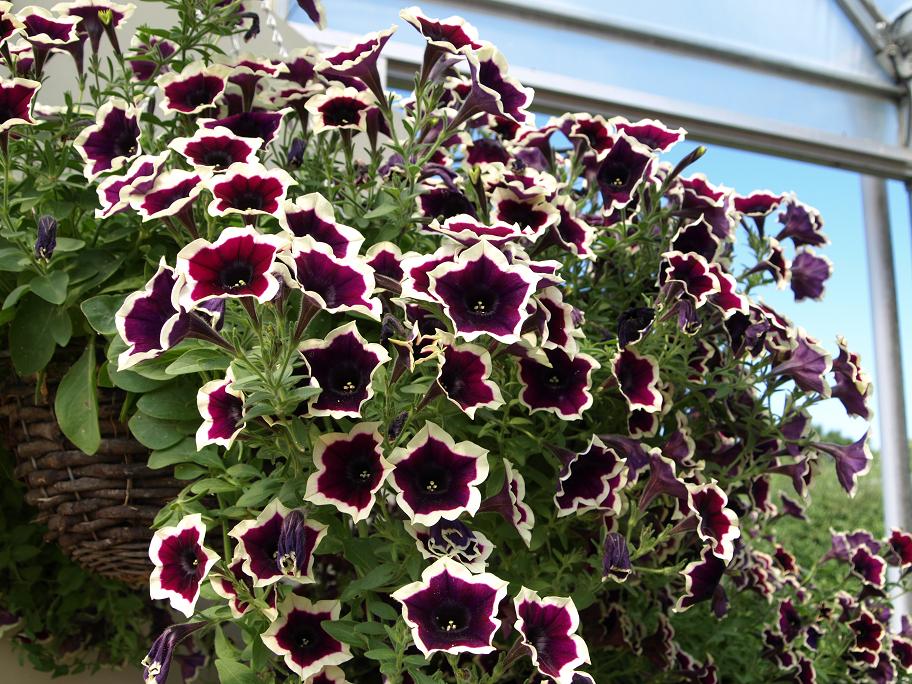
Brown spots on petunia leaves can be caused by various factors. Fungal or bacterial diseases, such as leaf spot or blight, can result in the formation of brown spots on the leaves. Overwatering or excessively wet conditions can promote the growth of these diseases. Sunburn or scorching due to intense sunlight or high temperatures can also lead to brown spots. Additionally, certain pests, such as thrips or leaf miners, can cause damage that appears as brown spots on the leaves. Proper cultural practices, such as maintaining good air circulation, avoiding overwatering, and promptly addressing pests or diseases, can help prevent or minimise the occurrence of brown spots on petunia leaves.
 |
Gardening Expert: |
If you can't find what you are looking for on the website then you can ask one of our experts. To get in touch with us Click Here
We will try to get back to you with an answer as soon as we can.
Petunias are a genus of flowering plants native to South America, particularly Argentina and Brazil. They have become one of the most popular and widely cultivated annual flowers around the world due to their vibrant and abundant blooms.
Petunias are known for their trumpet-shaped flowers that come in a wide array of colours, including shades of pink, purple, red, white, and yellow. The flowers can be single, double, or ruffled, adding to the visual diversity of this plant. Petunias have a bushy growth habit and produce dark green foliage that serves as a lovely backdrop for their striking flowers.
Cultivating petunias is relatively easy, making them a favourite choice for gardeners of all experience levels. They prefer well-drained soil enriched with organic matter and require at least six hours of direct sunlight daily for optimal growth and flowering. Petunias should be watered regularly, allowing the soil to dry slightly between waterings to prevent overwatering. Deadheading, the removal of faded flowers, promotes continuous blooming and helps maintain the plant's appearance. Fertilising with a balanced, water-soluble fertiliser every two to three weeks can further enhance their growth and blooming potential.
Petunias are versatile plants that can be used in various ways. They are commonly planted in flower beds, borders, containers, hanging baskets, and window boxes, adding vibrant colours and a touch of charm to any space. Their trailing varieties are particularly popular for cascading over edges and creating beautiful floral displays. Petunias are also often featured in mass plantings or as accent plants in garden designs.
Petunias can be propagated from seeds or purchased as young plants from nurseries. Starting petunias from seeds allows for a wider selection of varieties. They can be sown indoors six to eight weeks before the last frost date and transplanted outdoors after the danger of frost has passed. Maintenance includes regular watering, fertilising, and deadheading. Trimming back leggy growth can help promote a bushier habit and encourage additional flowering. Petunias are typically treated as annuals, but some varieties may persist as perennials in milder climates.
Petunias bring a vibrant burst of colour to gardens, containers, and hanging baskets, making them a popular choice for adding visual appeal to outdoor spaces. With their wide range of colours and easy cultivation, petunias provide endless opportunities for creative landscaping and floral displays.
Did you find this answer useful? Subscribe to our newsletter for gardeing news, projects, special offers and competitions.
RHS Harlow Carr
Harrogate, United Kingdom
Koishikawa Korakuen Gardens
Tokyo, Japan
Singapore Botanic Gardens
Singapore
Saint Petersburg Botanical Garden
Saint Petersburg, Russia
Butchart Gardens
British Columbia, Canada
Gardens of Versailles
Versailles, France